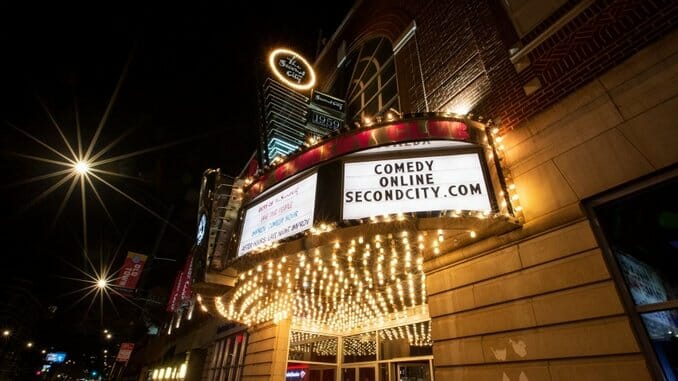What We Can Learn From Improv Theaters’ PPP Loans
Photo courtesy of Getty Images
“This article was originally published on Humorism, a newsletter about labor, inequality, and extremism in comedy. Subscribe here to get posts like this in your inbox.
The Small Business Administration recently published granular information about its Paycheck Protection Program loans, which distributed millions of dollars to businesses earlier in the pandemic. The loans were chiefly intended for businesses to keep their employees on payroll; businesses that used them for this purpose (and a few others) would be eligible for loan forgivenesses. Or they could spend the money on whatever they wanted and treat it like a regular low-interest loan. The newly released SBA data drives home one lesson that Covid-19 has revealed about the current for-profit improv theater/training center model: that it’s fundamentally structured to funnel money to landlords first and workers second, if it all.
As you may recall, all three major improv theaters took out PPP loans. UCB and Second City received some heat for this, because they very obviously didn’t rehire the workers they laid off before getting the money. Over at iO, Charna Halpern did keep employees on payroll but ended up closing the theater anyway—and putting it on the market—citing property taxes and other financial struggles. UCB and Second City ended up in more or less the same place: the former just sold one of its remaining two theaters, while the latter is still looking for someone to buy its flagship theater and also the entire company.
Of the three, Second City’s fate should come as the biggest surprise. While I have often argued (and still believe) that things didn’t have to be this way, UCB and iO were undeniably run on (relatively) shoestring budgets, largely because they fucked themselves over in the mid-’00s by spending millions of dollars on property. (UCB went a million in debt on UCB East, never found tenants for most of Sunset’s retail storefronts, and locked itself into a 15-year lease at around $315,000 a year in Hell’s Kitchen. Halpern spent $7 million on a new space in 2014, financed by a small business loan, while running her Los Angeles location into the ground.) Second City has long been a highly professionalized cash machine. Former CEO Andrew Alexander told Crain’s in 2016 that the company had an annual revenue of $55 million, almost double its 2012 revenue of $30 million. By contrast, the New Yorker pegged UCB’s training center revenue for that year at $5 million. Some speculative napkin-math would suggest the theatre brings in at least a couple million annually, on the low end (even if it ultimately isn’t enough to cover expenses).
Anyway. The thing with the PPP loans is that they all follow the same calculation: two and a half months of a company’s 2019 payroll. That means we can use each theatre’s loan amount to reverse engineer its payroll for the year before the crisis. Second City’s $3.22 million loan indicates a 2019 payroll of $15.4 million for a reported 490 employees. (I believe this includes all three of the company’s locations, even Toronto; my understanding is that the PPP allowed you to use your total headcount to calculate the loan, though you couldn’t disburse any funds to non-US employees.) UCB’s $1,120,458 loan, acrossboth training centers, indicates a 2019 payroll of $5.37 million for a reported 160 employees. And iO’s $516,700 loan indicates a 2019 payroll of $2.48 million for a reported 140 employees.